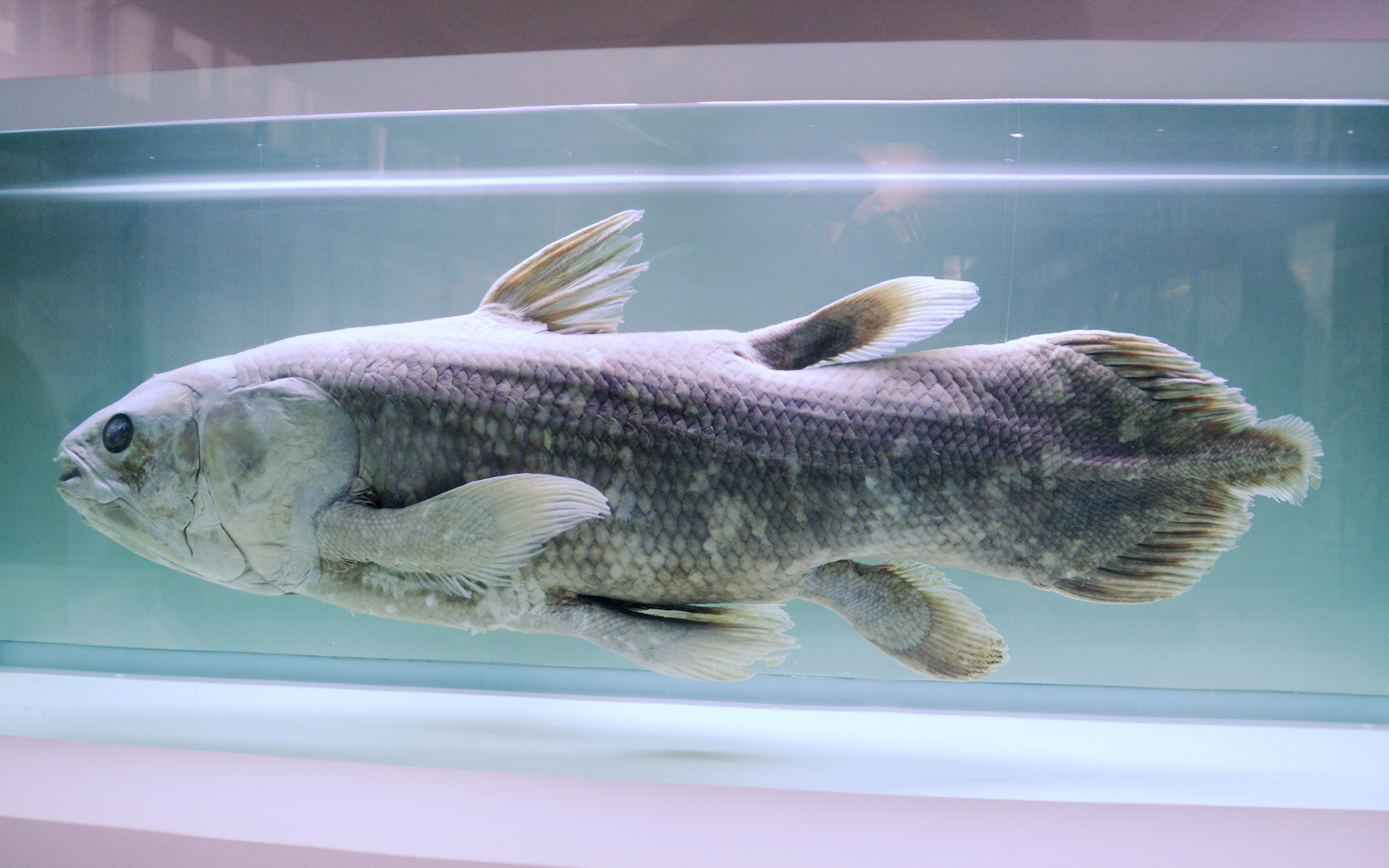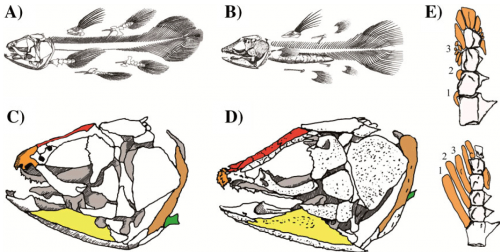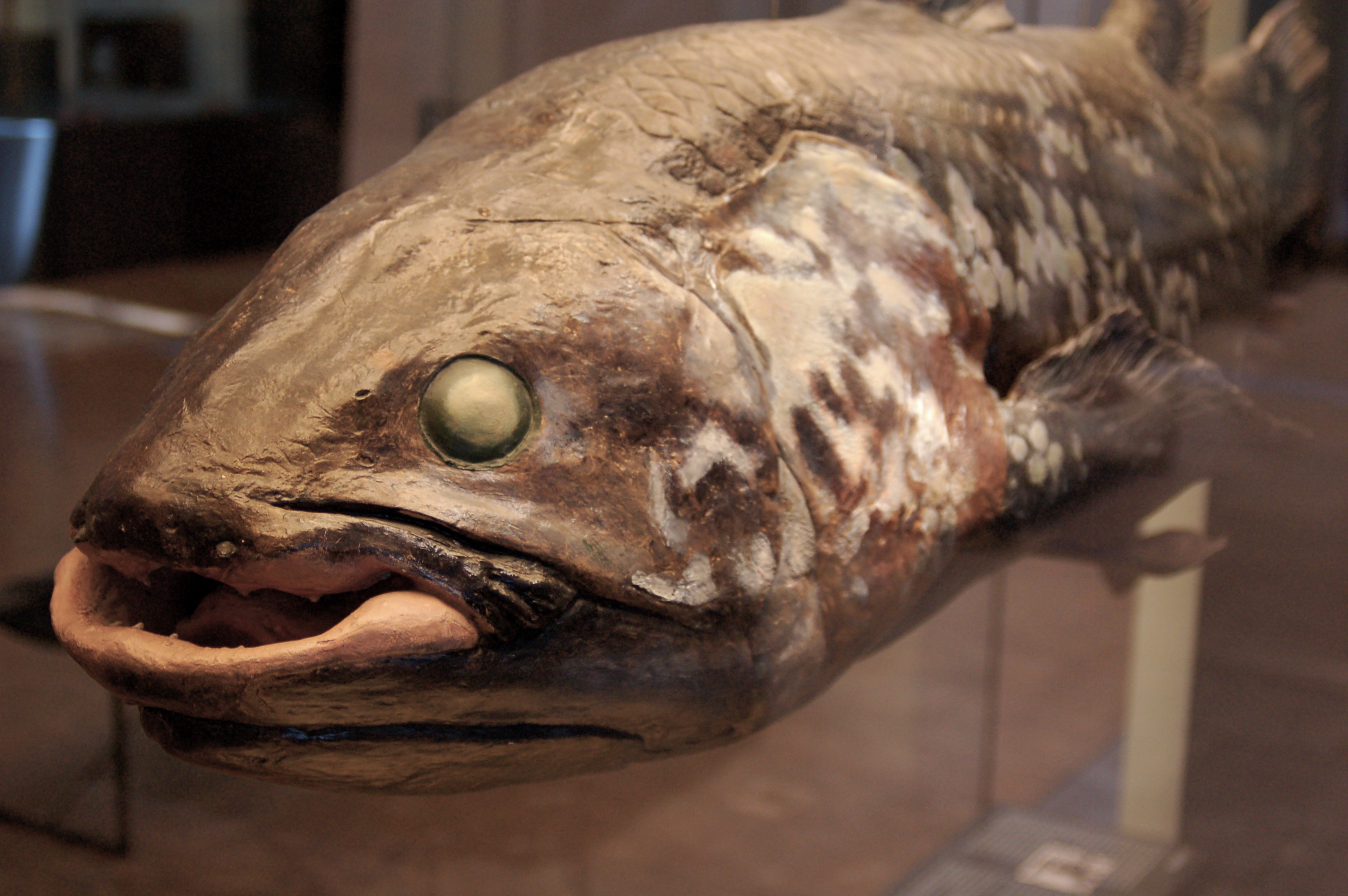Coelacanth Hangout
Last week science writer Carl Zimmer moderated a cross-disciplinary discussion on the newly sequenced genome of the elusive coelacanth (pronounced ‘seel-i-kanth’).
This deepwater, lobe-finned fish was one of the most surprising discoveries of the 20th century and a powerful object lesson for understanding evolution. The coelacanth is often colloquially referred to as a “living fossil,” a situation in which fossils of an animal are found before the living specimen—in this case over one hundred years before. Presumed extinct for 70 million years, it was found flopping around in trawler nets off the coast of Africa in 1938. Today there are only two extant species of coelacanth, both among the most critically endangered species on the planet.
If you’re looking for a useful launching pad for explaining the principles of evolution, look no further than this enigmatic fish. First, it shows how critical a role environment plays in the formula of natural selection. According to the fossil record, coelacanths could once be found in abundance densely hugging the littoral regions of Africa and south Asia several millions of years ago. It was then thought to have gone extinct at the time of the impact event marked by the Cretaceous-Paleogene (K-Pg) boundary. Its later re-discovery tells us that certain species of the fish were able to survive in narrow pockets of their environment where selection pressures operated at reduced magnitude.
The volatile climate brought about by the K-Pg impact thus signaled the death knell for the coelacanth (along with 75% of extant species at the time) in many of its most densely inhabited areas. However, the climate aftermath was not uniform across all coelacanth habitats, which is why we still find them in remote regions today.
Those that survived were nudged, genetically and morphologically, in some rather interesting directions, which brings us to our second point. The modern coelacanth is quite distinct from its ancestral counterpart. From morphological comparisons capturing the last ~400 million year history of this species we can see an elegant transition from its ancient to its modern form. In the image below, a profile view of the Latimeria and its closest fossil relative, you can see a number of skeletal differences among the fins, main body and vertebrae.
All things considered, the coelacanth is one of the most beautiful examples of a “transitional” form on record. It’s believed to be one of the main species linking up gill-bearing, finned fish to air-breathing, limbed amphibians. Its unique fin structure, auditory system and vestigial lung are all precursory to the Devonian divergence of tetrapods like reptiles and amphibians, and in fact the modern coelacanth shares more in common with these orders of organisms than with other modern fish.
Today this distant relative, which has an average lifespan of 60 years and can grow as large as 6.5 ft (2 m) in length, can only be found along the coasts of the Indian Ocean and Indonesia. Learn more from the discussion below.
http://www.youtube.com/watch?v=-BSOFor1IsA&feature=youtu.be
Feature image courtesy of Todd Huffman





Comments